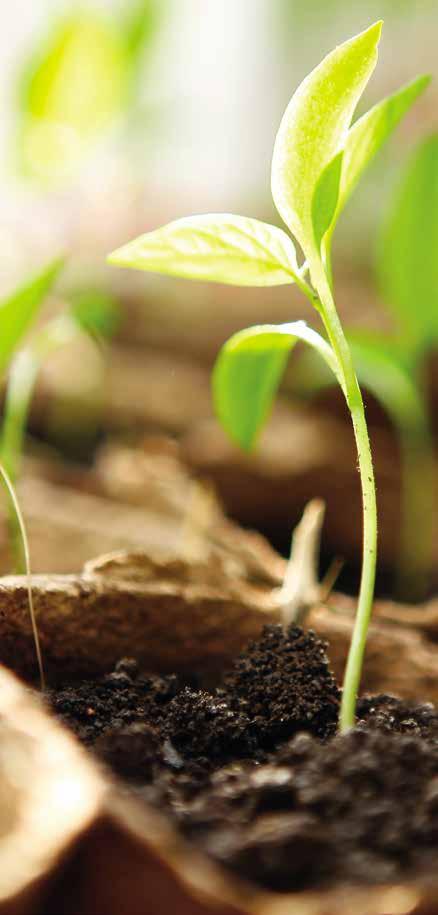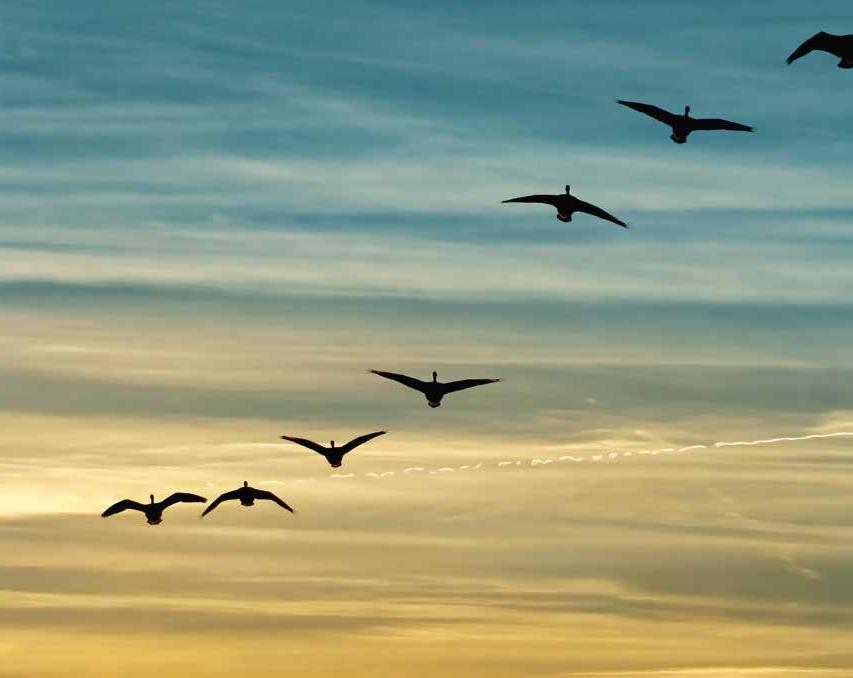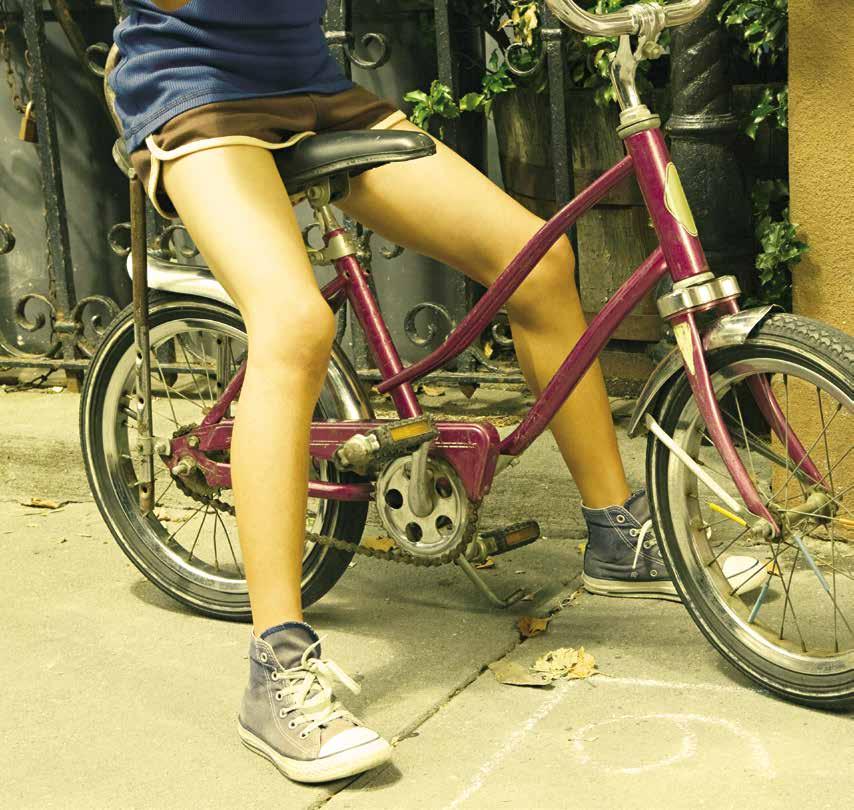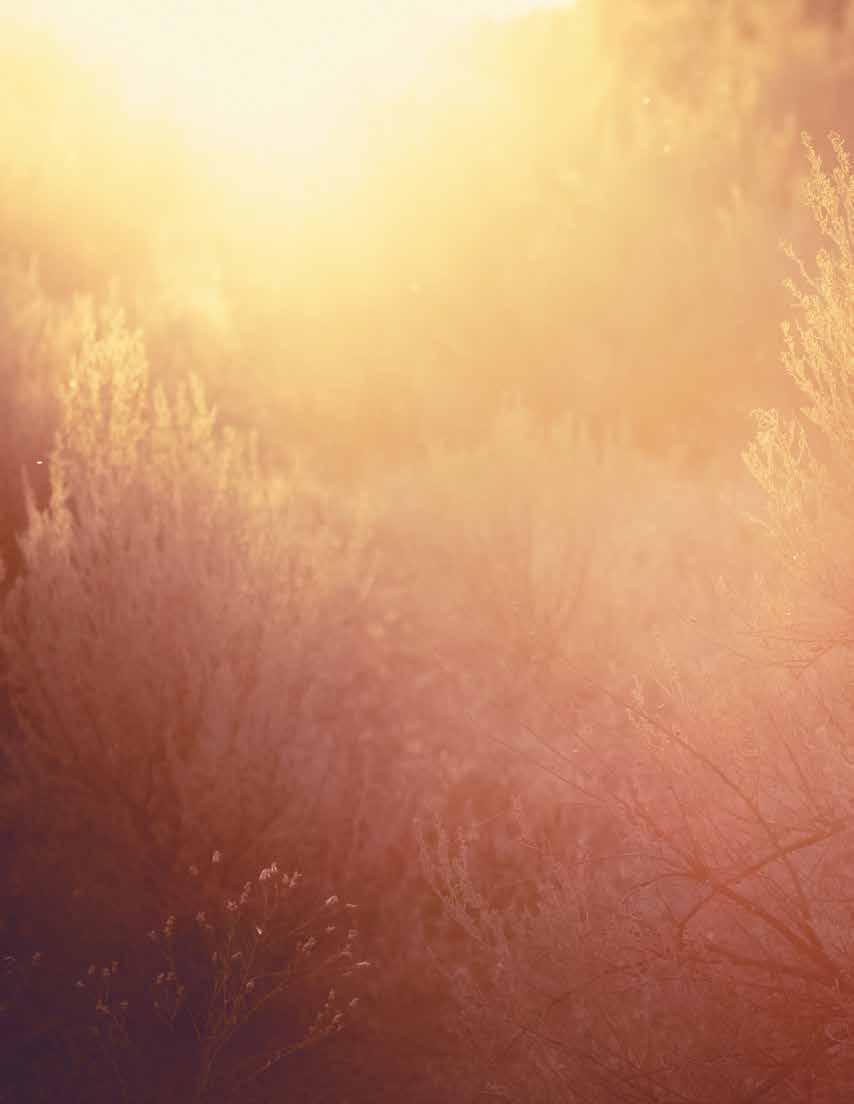
5 minute read
En Plein Air
by Ken Rogers
A story about regret, risking failure, humility, and satisfaction:
Advertisement
Sunrises set up North Dakota landscapes. Deep colors. Soft lines. A brush-filled draw cuts across the hillside from left to right. It angles into a barbwire fence that divides a field from pasture. Shale and sandstone outcroppings and a litter of glacial granite break up the prairie. A small stand of cottonwoods catches the soft yellow light, throwing shadow across the tall grass.
Working out of the back of my Jeep, using a paint box and easel, I’m making art.
A simple sketch. Then, with a brush and oils, paint in the shapes and shadows. Work the details swiftly as the light changes. It’s an impression.
North Dakota rocks me. Growing up in North Dakota was grand. And my long life here has been sometimes satisfying and always rich.
If there’s a regret for me, it is that I came to art on the far arc of this circle of life. I wish it had happened sooner.
Growing up in a small western North Dakota town, art pretty much did not exist. There was music, the stuff of marching band, polka and waltz. But no visual art. No symphony. No dance.

West River Tree Row. By Ken Rogers, from the artist’s collection. Oil on canvas. The pictured shelter belt and field is just southwest of Richardton, ND.
In the third grade, a teacher had us put blank sheets of paper on our desks with pencils at the ready. She then put a classical music album on a small phonograph. We were to translate the sounds to lines on the paper. Whirls and loops. Jags and blips and runs. I loved it, but I didn’t realize it was art.
Instead we had science and math. Numbers and formulas. A sampling of history and literature. We were insulated, socially and politically, from the world. We were told we were getting a good education, and we aped that praise. Until later, when it became clear, regretfully, it could have been much better or at least different.
As a result, I did not learn the basics of drawing until late. Any ideas I had about composition were intuitive. And when it comes to color, I was and remain nearly clueless.
But this circle, too, has come round upon itself.
In preparing articles and publications on the Lewis and Clark Bicentennial for the Bismarck Tribune, art began to take up my life. The “go to” artworks for illustrating stories about the expedition were the paintings of Karl Bodmer, who was drafted by German Prince Maximilian of Weid as an artist to accompany him to the Upper Missouri nearly thirty years after the Lewis and Clark Expedition.
Look at the Swiss artist’s landscape paintings today and a person can “see” the land as it was, as it can still sometimes be found. His prints are real and romantic. His artwork goes well beyond what photography can do, at least in my mind. There was an understanding between Bodmer and the geology and topography of the Upper Missouri country.
It came to me that I could take a “good” photograph of a landscape without understanding that landscape. Without spending time with that landscape. Without being attentive. Just push the button. Not so with charcoal, pencil, or brush. The process of making art demands more. That means a greater understanding of the land— drainage, slope . . .
I decided to pick up watercolors and follow Bodmer’s lead. The learning curve was steep. I didn’t have the language, background, or the skills. What I did not know was nearly overwhelming. But making art felt right. And it was then that I began to feel those regrets.
Always believing that if there was a book about how to do something, I could read it and then do it—within reason. If I was patient and slogged through the material, I could teach myself. I could be self-taught, I thought.
In the beginning, my making art was a struggle. The process was engaging and enjoyable, but the result was not. My paintings were primitive. Rustic. And I became very discouraged.
Also, I discovered that I had to be willing to fail. It was painful at times. People looked at my work and would get nervous smiles or make vague comments, such as “I wish I could do that.” Really.
The most obvious problem was my lack of drawing skill. As words and grammar are to literature, drawing is to the visual arts. It’s the basic language of painting, sculpting, and printmaking. No matter how much I went out sketching, the rate of improvement seemed too slow. I needed to draw better to make any real progress. I took one of those two-day weekend drawing classes. It quickly became clear that there were all kinds of simple rules, formulas, and what not that could improve anyone’s drawing skills.
I had to ask for help. I went back to college, taking daytime drawing classes at Bismarck State College, where most of my peers were still in their teens. Humbling, it was. But I wanted the knowledge and the skill the instructors and classes brought. It was shades of Nell Painter’s Old in Art School, although I do not get why she needed the degrees and diplomas when gaining skill and knowledge was what it was all about.
Also, I discovered that what I was doing, sketching out in the field, had a name: en plein air. It’s French for painting out of doors. And like taking up golf or some other hobby, there was all kinds of stuff to buy. My first and favorite plein air paint box, made of wood, has leather straps. It was ten by thirteen by five inches, and mounts on top a typical camera tripod. Open the lid, there’s room for thin nine-by-twelve-inch painting panels and a palette. Below a sliding top shelf, there are smaller spaces for paint, linseed oil, turpentine, rags, pencil, and a tiny sketch pad.
The rule of thumb is to spend two hours, from start to finish, capturing an outdoor scene. It’s challenging on so many levels. Problem-solving to the max.
I still live in the same western North Dakota county that I grew up in— Morton County. That I do not regret. I can still do numbers like I was taught in school. But my life has changed. I spend more time studying the landscape. My drawing and painting have gotten better. As for the results, there are good days and not-so-good days. I’ve discovered the process is more important.
Much of my time in good weather is spent driving gravel roads—scouting places to paint—with a thermos of tea, a bag lunch, and a North Dakota atlas along for the ride. I’m just waiting to pull over and paint.
KEN ROGERS has lived in western North Dakota for more than fifty years. His “working life” was spent as a journalist. He and his wife, Debi, live in Mandan.










